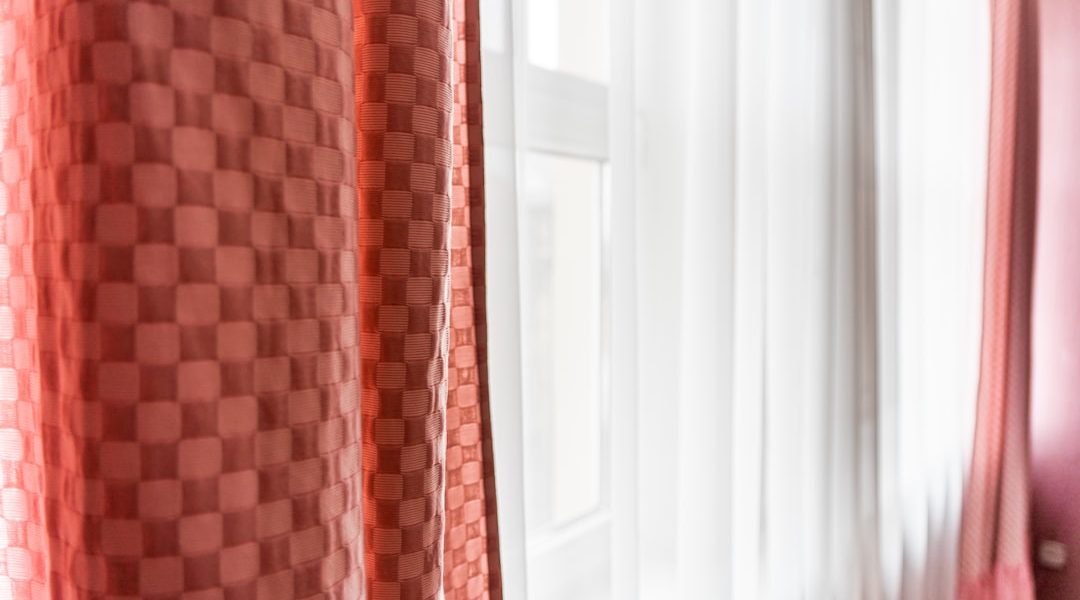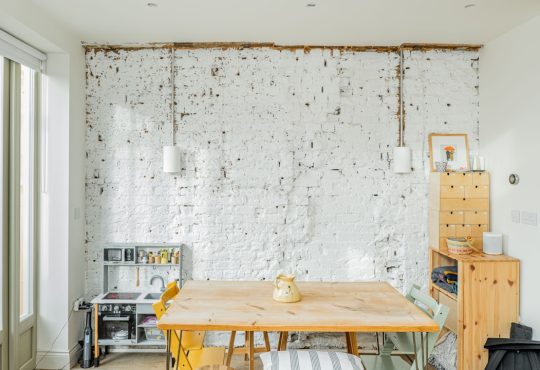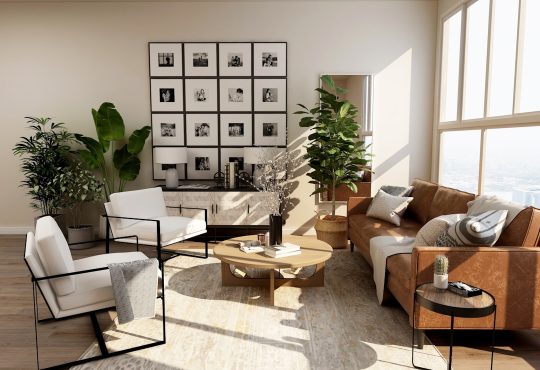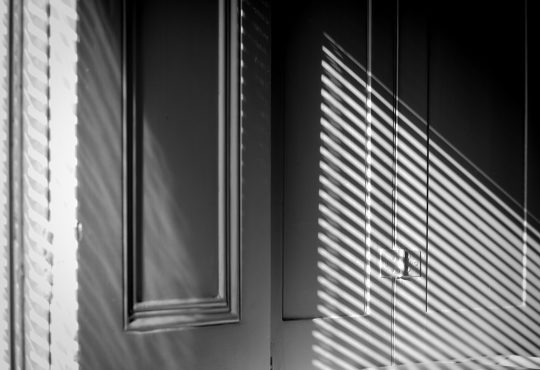
Curtains and blinds play a crucial role in setting the mood at home
When you think about designing a room, your mind likely jumps to the big-ticket items: the color of the walls, the style of the sofa, or the placement of a statement rug. Window treatments, such as curtains and blinds, are often relegated to the end of the process, considered a purely functional necessity. However, this is a missed opportunity. Your window coverings are far more than simple screens against the sun or prying eyes. They are the mood-setters, the atmosphere architects, and the final brushstroke that can either complete your masterpiece or leave it feeling unfinished. They act as the eyelids of your home, controlling how much of the world you let in and shaping the character of the light that fills your space. Understanding their role is crucial to creating a home that not only looks good but feels right.
This article will explore the many ways in which curtains and blinds dictate the emotional temperature of your rooms, from managing light to introducing color and texture, ultimately giving you the power to consciously craft the atmosphere you desire.
Light is the most fundamental element of interior design. It dictates how colors are perceived, how large a space feels, and, most importantly, how we feel within that space. Curtains and blinds are your primary tools for controlling this powerful element, allowing you to sculpt the light to match the intended mood of any room.
Harnessing Natural Light for Energy and Openness
Imagine a living room in the morning, bathed in soft, diffused sunlight. The mood is likely one of cheerfulness, energy, and openness. This atmosphere is not an accident; it is curated. To achieve this, you would turn to specific types of window treatments. Sheer curtains, made from materials like voile or linen, are experts at this. They don’t block light but rather filter it, softening harsh glares while allowing the full brightness of the day to pour in. They maintain a connection to the outdoors, making a room feel larger and more alive. Similarly, light-colored blinds, such as those in white, cream, or a pale wood finish, can be tilted to bounce sunlight up onto the ceiling, creating an ambient glow that illuminates the entire room without direct, uncomfortable beams. This approach is ideal for kitchens, home offices, and living areas where you want to promote productivity and a positive, welcoming vibe.
Creating Intimacy and Calm with Dimmed Light
Conversely, there are times when you want to retreat from the world and create a space of quiet and repose. A bedroom designed for restful sleep or a media room for an immersive movie experience requires the near-total absence of light. This is where blackout curtains and blinds come into play. Made with a dense weave or a special lining, they are designed to block nearly all incoming light, instantly transforming a room into a dark, quiet cocoon. This level of control is essential for setting a mood of intimacy, relaxation, and deep comfort. The simple act of drawing a heavy, light-blocking curtain can signal to your mind that it is time to unwind. In a living room, using thick drapes made of velvet or lined brocade can create a dramatic, cozy atmosphere in the evening, perfect for quiet conversation or reading by a lamp.
The Direction and Quality of Light
Beyond simply letting light in or blocking it out, some window treatments offer nuanced control over its direction. Venetian blinds, with their horizontal slats, and vertical blinds, with their vertical vanes, are masters of precision. By adjusting the angle of the slats, you can direct sunlight with remarkable accuracy. You can angle it downwards to prevent glare on a television or computer screen while still brightening the floor. You can tilt it upwards to wash the ceiling in light for a soft, indirect effect. This granular control allows you to fine-tune the room’s mood throughout the day, responding to the changing position of the sun. You can have a bright, active space in the morning and a softly lit, calm space in the afternoon, all with a simple adjustment.
The Psychology of Color and Pattern
Color is a silent language that speaks directly to our emotions. The color of your curtains or blinds can be one of the most significant sources of color in a room, acting as a vertical expanse of a particular hue that can dominate or subtly influence the space’s overall feeling.
Cool Tones for Serenity and Focus
Colors on the blue and green spectrum are generally perceived as calming and restorative. A room with curtains in a soft sage green or a dusty blue can promote a sense of tranquility and focus, making these colors excellent choices for bedrooms, bathrooms, or a home study. They are recessive colors, meaning they can make a space feel larger and more open, contributing to a feeling of uncluttered peace. Gray, another cool tone, can create an atmosphere of sophisticated and modern stability. When you use cool-toned blinds or curtains, you are essentially telling the nervous system to relax, creating a sanctuary from the bustle of the outside world.
Warm Hues for Comfort and Vibrancy
On the opposite end of the spectrum, warm colors like red, orange, and yellow inject energy and warmth into a space. A deep terracotta or burnt orange curtain can make a large living room feel cozier and more inviting, encouraging social interaction and conversation. These are colors associated with warmth and hospitality. A soft yellow in a kitchen or breakfast nook can evoke feelings of happiness and optimism, starting the day on a bright note. While a bold red might be too stimulating for a bedroom, used as an accent in a pattern or a deep, rich burgundy, it can add a touch of passion and luxury. These colors advance visually, making a space feel more intimate and snug.
The Role of Patterns in Visual Energy
The choice is not just between solid colors. Patterns play a significant role in a room’s energy level. Large-scale, bold geometric patterns can create a dynamic, modern, and high-energy mood. They draw the eye and make a strong statement, suitable for a contemporary living space or a creative studio. In contrast, small, delicate floral or botanical patterns tend to create a softer, more traditional or romantic feeling. They add visual interest without overwhelming the senses, contributing to a calm and charming atmosphere. The density of the pattern also matters; a busy, intricate pattern will create a very different mood from a sparse, simple one.
The Understated Power of Neutrals
It would be a mistake to overlook the impact of neutral colors. White, cream, beige, and taupe are not merely “safe” choices; they are powerful mood-setters in their own right. Crisp white curtains can create a feeling of cleanliness, simplicity, and minimalist calm. They maximize the sense of light and space, acting as a blank canvas for other elements in the room. Beige or linen-colored curtains provide a soft, organic warmth that is both grounding and sophisticated. Neutrals offer a sense of stability and allow you to change the mood of the room through other, more easily swapped accessories like cushions and throws.
Material and Texture: The Tactile Dimension
How a fabric looks is only part of its story. Its texture—both visual and physical—adds a crucial layer of depth to a room’s atmosphere. The material of your curtains or blinds can influence whether a space feels formal and luxurious, or casual and relaxed.
Heavy Fabrics for a Sense of Security and Luxury
Think of the materials you might find in a grand hotel, a historic library, or a theater. Fabrics like velvet, wool, heavyweight linen, and silk brocade have a substantial presence. Their weight and density not only provide excellent light-blocking and sound-dampening qualities but also communicate a sense of luxury, permanence, and security. Velvet curtains, with their deep pile and rich sheen, can add a touch of drama and opulence, making a room feel more formal and enclosing. Heavy wool or tweed can lend a rustic, scholarly feel, creating a cozy and protected environment perfect for a den or winter living room. These materials absorb sound, literally quieting a room and contributing to a more peaceful mood.
Sheer and Lightweight Materials for an Airy Feel
For a mood that is light, breezy, and informal, you should look to lightweight fabrics. Sheer voile, cotton, and open-weave linen curtains move gently with the slightest breeze, creating a sense of life and motion. They don’t weigh a room down; instead, they lift it up. This effect is perfect for creating a relaxed, coastal, or Scandinavian-inspired atmosphere. The light filtering through these fabrics is soft and ethereal, fostering a mood of casual elegance and effortless comfort. They connect the indoor space with the outdoors, blurring the lines and making the room feel like a natural extension of its environment.
Natural Materials for an Organic, Grounded Atmosphere
Blinds made from natural materials like wood and bamboo, or curtains made from raw silk, jute, or burlap, bring an element of the outdoors inside. Wooden blinds, whether painted or stained, provide a sense of classic structure and natural warmth. Bamboo or woven grass shades offer a more rustic, textural quality that feels both organic and sophisticated. These materials connect us to the natural world, which can have a profoundly calming and grounding effect on our mood. They work beautifully in spaces that aim for a relaxed, bohemian, or nature-inspired aesthetic, adding texture and warmth that manufactured materials often cannot replicate.
Functionality Dictates Feeling
| Aspect | Metrics |
|---|---|
| User Interface | Number of clicks to complete a task |
| Response Time | Time taken for system to respond to user input |
| Accessibility | Percentage of users who can access all features |
| Reliability | Number of system failures over a period of time |
The very form and function of your chosen window treatment carry inherent stylistic messages that contribute to the room’s mood. The choice between the soft folds of a curtain and the clean lines of a blind is not just a practical one; it is a declaration of style.
The Structured Formality of Blinds and Shutters
Blinds and plantation shutters are defined by their clean, crisp lines. This structure lends a room a sense of order, efficiency, and modernity. Roman blinds, which stack neatly when raised, offer a tailored look that is less fussy than curtains but softer than Venetian blinds. Roller blinds provide a minimalist, unobtrusive screen that is perfect for a space where the window or the view is the main event. The inherent geometry of blinds complements modern, minimalist, and industrial design styles. This clean aesthetic can foster a feeling of focus and uncluttered calm, which is why blinds are often a popular choice for home offices and kitchens.
The Softness and Tradition of Curtains
Curtains, with their flowing fabric and soft folds, do the opposite of blinds: they soften the hard edges of a room. The vertical lines of hanging drapes can make a ceiling feel higher, while the pooling of fabric on the floor can create a sense of romantic abundance. They bring movement and a gentle grace to a space. This makes them ideal for creating a traditional, romantic, or comfortable and “lived-in” atmosphere. In a bedroom, long, flowing curtains can enhance a feeling of serene luxury. In a formal dining room, pleated drapes can add a sense of occasion and elegance.
Layering for Versatility and Depth
You do not have to choose between the functional structure of blinds and the decorative softness of curtains. Layering the two is a highly effective strategy that offers the ultimate control over both mood and practicality. You can install a functional blackout roller blind for privacy and light control, and then hang decorative sheer curtains over it to soften the look and add color or pattern during the day. This combination allows you to precisely tailor the atmosphere. You can have the blinds down for privacy, the sheers drawn for diffused light, or both pulled back to let the full daylight in. This layering adds visual depth and complexity, making a window a true focal point and demonstrating a thoughtful approach to design.
Framing Your World: Privacy and Connection
Finally, your window treatments mediate your relationship with the world outside your home. They are the frame through which you view your surroundings and the shield that protects your personal space.
Establishing a Private Sanctuary
The need for privacy is a fundamental human instinct. The ability to shut out the world is essential for feeling safe and relaxed in your own home, especially in bedrooms, bathrooms, or ground-floor rooms that face a busy street. Opaque blinds and heavy curtains provide this sense of enclosure. The simple act of closing them at the end of the day is a ritual that marks the transition from public life to private sanctuary. This control over who can see in is not just a practical matter; it is crucial for creating a mood of security and peace of mind.
Framing a View Like a Work of Art
If you are fortunate enough to have a beautiful view—whether of a garden, a cityscape, or a natural landscape—your window treatments should not obstruct it but enhance it. By hanging curtains on a rod that extends well beyond the window frame, you can pull them back completely, framing the view as if it were a painting. The color and style of the curtains can be chosen to complement the colors outside, creating a harmonious link between your interior and the exterior world. This turns your window into a dynamic focal point and fosters a mood of connection and appreciation for your surroundings.
The Graduated Control of Top-Down/Bottom-Up Shades
A particularly innovative solution that perfectly balances privacy and light are top-down/bottom-up shades. These versatile blinds can be lowered from the top, raised from the bottom, or both. This allows you to cover the bottom half of your window for privacy from street-level view while letting light flood in through the top half. It is the ideal solution for creating a space that feels both secure and open, private and bright. This functionality directly translates to a mood of balanced control, allowing you to enjoy natural light without feeling exposed.
In conclusion, it is clear that curtains and blinds are far more than mere accessories. They are active participants in the creation of your home’s atmosphere. By thoughtfully considering how you want to feel in a room—be it energized, calm, cozy, or open—you can select window treatments that will help you achieve that mood. Through the masterful control of light, the deliberate use of color and texture, and the choice between hard lines and soft folds, you hold the power to shape the emotional character of every room. The next time you look at a window, see it not as a problem to be covered, but as a canvas of opportunity.
When it comes to creating a cozy and inviting atmosphere at home, curtains and blinds are essential elements. They not only provide privacy and control over natural light but also play a crucial role in setting the mood of a room. In a related article on luxury Christmas decor, the author discusses how the right window treatments can enhance the overall ambiance of a space during the holiday season. By choosing the perfect curtains or blinds, you can transform your home into a glamorous and festive environment that exudes warmth and style.
FAQs

What is the difference between curtains and blinds?
Curtains are fabric panels that are typically hung from a rod and can be opened and closed to cover a window. Blinds, on the other hand, are made of hard materials such as wood, metal, or plastic and can be raised or lowered to cover a window.
How do curtains and blinds affect the mood at home?
Curtains and blinds can affect the mood at home by controlling the amount of natural light that enters a room. They can also provide privacy and insulation, and their color and design can contribute to the overall aesthetic of a space.
What are the different types of curtains and blinds available?
There are various types of curtains, including sheer, blackout, and thermal curtains. Blinds come in different styles such as roller blinds, venetian blinds, and vertical blinds, each offering different levels of light control and privacy.
How do curtains and blinds contribute to energy efficiency at home?
Curtains and blinds can help regulate the temperature inside a home by providing insulation. In the winter, they can help retain heat, while in the summer, they can block out the sun’s heat, reducing the need for heating and cooling.
What factors should be considered when choosing curtains and blinds for a home?
When choosing curtains and blinds, factors to consider include the amount of natural light in the room, the desired level of privacy, the overall decor style, and the specific function of the window treatment, such as insulation or light control.



